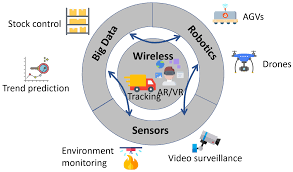Exploring VAMOS: Voice Services Over Adaptive Multi-User Channels
telcomatraining.com – Voice services are a crucial component of modern telecommunication networks, enabling seamless communication across various platforms. One of the significant advancements in voice communication is Voice services Over Adaptive Multi-user Channels (VAMOS), a technology that enhances spectral efficiency and improves voice capacity in cellular networks. This article explores VAMOS technology, its benefits, working principles, and its impact on modern telecommunication systems.
Understanding VAMOS Technology
VAMOS is a technology that enables the transmission of multiple voice calls over the same frequency channel by leveraging advanced signal processing and adaptive multi-user techniques. It is primarily used in GSM (Global System for Mobile Communications) networks to increase voice capacity without requiring additional frequency spectrum.
Traditionally, GSM networks operate using Time Division Multiple Access (TDMA), where each voice call occupies a separate time slot. However, with VAMOS, multiple users can share the same time slot, effectively doubling the voice capacity of GSM networks. This is achieved through adaptive multi-user detection (MUD) techniques and advanced modulation schemes.
Key Features of VAMOS
- Enhanced Spectral Efficiency
- VAMOS increases the number of users per channel without increasing bandwidth consumption.
- Backward Compatibility
- The technology is designed to work with existing GSM infrastructure, ensuring smooth network upgrades.
- Improved Voice Capacity
- By enabling multiple voice calls per channel, VAMOS enhances network performance and reduces congestion.
- Robust Signal Processing
- Advanced signal detection and error correction mechanisms minimize interference and improve call quality.
How VAMOS Works
VAMOS employs a combination of adaptive coding, multi-user detection, and improved modulation schemes to support multiple voice calls within a single time slot. The core techniques behind VAMOS include:
- Adaptive Multi-User Detection (MUD): Differentiates between signals from multiple users and extracts individual voice streams.
- Advanced Modulation Techniques: Utilizes 8-PSK (Phase Shift Keying) and other modulation methods to maximize data transmission efficiency.
- Error Correction and Signal Processing: Enhances voice clarity by reducing noise and interference in multi-user channels.
- Dynamic Power Control: Adjusts transmission power dynamically to optimize signal strength and minimize interference between users.
Benefits of VAMOS in Telecommunications
1. Increased Network Capacity
By allowing more voice calls to be carried simultaneously, VAMOS helps telecom operators serve more users with the same spectrum resources.
2. Cost-Effective Implementation
Since VAMOS is compatible with existing GSM infrastructure, network providers can upgrade their services without the need for expensive hardware changes.
3. Better Quality of Service (QoS)
With robust signal processing techniques, VAMOS ensures clear and uninterrupted voice calls, improving customer satisfaction.
4. Optimized Frequency Spectrum Usage
The technology enables better utilization of limited frequency resources, making it a sustainable solution for growing network demands.
Challenges and Considerations
While VAMOS offers significant advantages, there are some challenges associated with its implementation:
- Interference Management: With multiple users sharing the same frequency, interference must be carefully managed to maintain call quality.
- Hardware and Software Upgrades: Although VAMOS works with existing GSM networks, some base stations may require firmware updates for optimal performance.
- Adoption Barriers: Telecom providers need to educate stakeholders about VAMOS to encourage its widespread adoption.
Future of VAMOS in Telecommunications
As mobile networks continue to evolve, technologies like VAMOS play a crucial role in maximizing the efficiency of existing infrastructure. With the increasing demand for 5G and beyond, adaptive multi-user techniques will likely be integrated into newer communication protocols to further enhance network capabilities.
In conclusion, VAMOS represents a significant advancement in voice communication, enabling telecom providers to deliver high-quality voice services while optimizing spectrum efficiency. As technology continues to progress, the principles behind VAMOS will likely influence future developments in mobile networks, ensuring better connectivity for users worldwide.
By implementing VAMOS, mobile network operators can increase their service capacity, reduce costs, and provide better voice quality to their customers. This makes it a vital innovation for the future of telecommunications.







